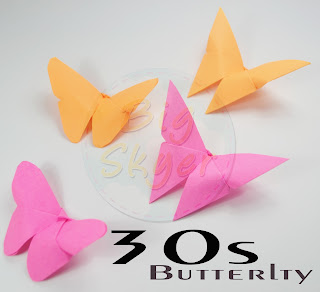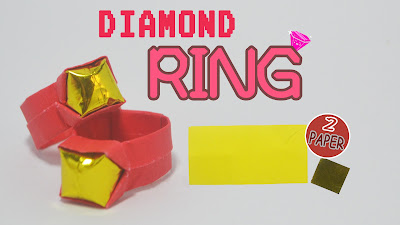You love origami. You usually make origami. Do you know what does Origami mean? How does origami begin?
The different in paperfolding traditions arose in Europe, China, and Japan which have been well-documented by historians. Before the 20th century, these seems to have been mostly separate traditional.
In Europe, there was a well-developed genre of napkin-folding, which flourished during the 17th and 18th centuries. After this period, this genre declined and was mostly forgotten; historian Joan Sallas attributes this to the introduction of porcelain, which replaced complex napkin folds as a dinner-table status symbol among nobility.
In general, origami begin with a square sheet of paper. The paper may be 2 colors, prints, or patterns. The purpose of making origami has a little diffirent in that country.
Techniques of origami
To make origami, you need to know the basic rules. The basic origami techniques are used to construct the models. This includes simple diagrams of basic folds like valley and mountain folds, pleats, reverse folds, squash folds, and sinks. There are also standard named bases which are used in a wide variety of models, for instance the bird base is an intermediate stage In the construction of the flapping bird. Additional bases are the preliminary base (square base), fish base, waterbomb base, and the frog base.
Origami is creative. You can think to make more interesting things by a paper. Don’t limit your ideas. Creation helps origami develop.
Origami paper
Almost any laminar (flat) material can be used for folding; the only requirement is that it should hold a crease.
Origami paper, often referred to as "kami" (Japanese for paper), is sold in prepackaged squares of various sizes ranging from 2.5 cm (1 in) to 25 cm (10 in) or more. It is commonly colored on one side and white on the other;
Washi (和紙?) is the traditional origami paper used in Japan. Washi is generally tougher than ordinary paper made from wood pulp, and is used in many traditional arts. Washi is commonly made using fibres from the bark of the gampi tree, the mitsumata shrub (Edgeworthia papyrifera), or the paper mulberry but can also be made using bamboo, hemp, rice, and wheat.
Artisan papers example unryu, lokta, hanji, gampi, kozo, saa, and abaca have long fibers and are often extremely strong. As these papers are floppy to start with, they are often backcoated or resized with methylcellulose or wheat paste before folding. Also, these papers are extremely thin and compressible, allowing for thin, narrowed limbs as in the case of insect models.
Paper money from various countries is also popular to create origami with; this is known variously as Dollar Origami, Orikane, and Money Origami.
There are many kinds of paper to make origami. You can choose the suitable paper to make origamis. The suitable paper can help your origami nicer.
Tools of origami
It is common to fold using a flat surface, but some folders like doing it in the air with no tools, especially when displaying the folding. Many folders believe that no tool should be used when folding. However a couple of tools can help especially with the more complex models. For instance abone folder allows sharp creases to be made in the paper easily, paper clips can act as extra pairs of fingers, and tweezers can be used to make small folds. When making complex models from origami crease patterns, it can help to use a ruler and ballpoint embosser to score the creases. Completed models can be sprayed so they keep their shape better, and a spray is needed when wet folding.
Types of origami
In general, there are 6 types of origami:
1. Action origami
Origami don’t limit actions. Origami not only covers still-life, there are also moving objects; Origami can move in clever ways. Action origami includes origami that flies, requires inflation to complete, or, when complete, uses the kinetic energy of a person's hands, applied at a certain region on the model, to move another flap or limb. Some argue that, strictly speaking, only the latter is really "recognized" as action origami. Action origami, first appearing with the traditional Japanese flapping bird, is quite common. One example is Robert Lang's instrumentalists; when the figures' heads are pulled away from their bodies, their hands will move, resembling the playing of music. All of action origami depend on your skills and your hobbies.
2. Modular origami
Modular origami consists of putting a number of identical pieces together to form a complete model. Normally the individual pieces are simple but the final assembly may be tricky. Many of the modular origami models are decorative balls like kusudama, the technique differs though in that kusudama allows the pieces to be put together using thread or glue.
Chinese paper folding includes a style called
Golden Venture Folding where large numbers of pieces are put together to make elaborate models. It is most commonly known as "3D origami", however, that name did not appear until Joie Staff published a series of books titled "3D Origami", "More 3D Origami", and "More and More 3D Origami". Sometimes paper money is used for the modules. This style originated from some Chinese refugees while they were detained in America and is also called Golden Venture folding from the ship they came on.
3. Wet-folding
Wet-folding is an origami technique for producing models with gentle curves rather than geometric straight folds and flat surfaces. The paper is dampened so it can be moulded easily, the final model keeps its shape when it dries. It can be used, for instance, to produce very natural looking animal models. Size, an adhesive that is crisp and hard when dry, but dissolves in water when wet and becoming soft and flexible, is often applied to the paper either at the pulp stage while the paper is being formed, or on the surface of a ready sheet of paper. The latter method is called external sizing and most commonly uses Methylcellulose, or MC, paste, or various plant starches.
4. Pureland origami
Pureland origami adds the restrictions that only simple mountain/valley folds may be used, and all folds must have straightforward locations. It was developed by John Smith in the 1970s to help inexperienced folders or those with limited motor skills. Some designers also like the challenge of creating within the very strict constraints.
5. Origami tessellations
Origami tessellation is a branch that has grown in popularity after 2000. A tessellation is a collection of figures filling a plane with no gaps or overlaps. In origami tessellations, pleats are used to connect molecules such as twist folds together in a repeating fashion.
6. Kirigami
Kirigami is a Japanese term for paper cutting. Cutting was often used in traditional Japanese origami, but modern innovations in technique have made the use of cuts unnecessary. Most origami designers no longer consider models with cuts to be origami, instead using the term Kirigami to describe them. This change in attitude occurred during the 1960s and 70s, so early origami books often use cuts, but for the most part they have disappeared from the modern origami repertoire; most modern books don't even mention cutting.
Origami has some diffirent on the world. But it’s always the art of folding paper. Origami not lonely helps you relax after working but also make you careful, light-handed and smarter.
I love origami!
I want to share my skills and creative about origami to you. If you like origami, please subcribe and follow me on:






























